Normalizing tumor microenvironment to treat cancer: bench to bedside to biomarkers
- PMID: 23669226
- PMCID: PMC3731977
- DOI: 10.1200/JCO.2012.46.3653
Normalizing tumor microenvironment to treat cancer: bench to bedside to biomarkers
Abstract
For almost four decades, my work has focused on one challenge: improving the delivery and efficacy of anticancer therapeutics. Working on the hypothesis that the abnormal tumor microenvironment-characterized by hypoxia and high interstitial fluid pressure--fuels tumor progression and treatment resistance, we developed an array of sophisticated imaging technologies and animal models as well as mathematic models to unravel the complex biology of tumors. Using these tools, we demonstrated that the blood and lymphatic vasculature, fibroblasts, immune cells, and extracellular matrix associated with tumors are abnormal, which together create a hostile tumor microenvironment. We next hypothesized that agents that induce normalization of the microenvironment can improve treatment outcome. Indeed, we demonstrated that judicious use of antiangiogenic agents--originally designed to starve tumors--could transiently normalize tumor vasculature, alleviate hypoxia, increase delivery of drugs and antitumor immune cells, and improve the outcome of various therapies. Our trials of antiangiogenics in patients with newly diagnosed and recurrent glioblastoma supported this concept. They revealed that patients whose tumor blood perfusion increased in response to cediranib survived 6 to 9 months longer than those whose blood perfusion did not increase. The normalization hypothesis also opened doors to treating various nonmalignant diseases characterized by abnormal vasculature, such as neurofibromatosis type 2. More recently, we discovered that antifibrosis drugs capable of normalizing the tumor microenvironment can improve the delivery and efficacy of nano- and molecular medicines. Our current efforts are directed at identifying predictive biomarkers and more-effective strategies to normalize the tumor microenvironment for enhancing anticancer therapies.
Conflict of interest statement
Author's disclosures of potential conflicts of interest and author contributions are found at the end of this article.
Figures
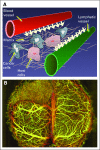
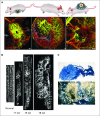

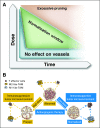
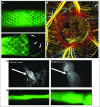
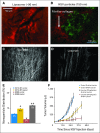
Comment in
-
Evolution of resistance to thyroid cancer therapy.Aging (Albany NY). 2016 Aug;8(8):1576-7. doi: 10.18632/aging.101030. Aging (Albany NY). 2016. PMID: 27575377 Free PMC article. No abstract available.
-
Letter: autoimmune hepatitis-drug-induced liver injury must always be excluded. Authors' reply.Aliment Pharmacol Ther. 2017 Aug;46(3):384. doi: 10.1111/apt.14181. Aliment Pharmacol Ther. 2017. PMID: 28677278 No abstract available.
Similar articles
-
Normalizing Function of Tumor Vessels: Progress, Opportunities, and Challenges.Annu Rev Physiol. 2019 Feb 10;81:505-534. doi: 10.1146/annurev-physiol-020518-114700. Annu Rev Physiol. 2019. PMID: 30742782 Free PMC article. Review.
-
Reengineering the Physical Microenvironment of Tumors to Improve Drug Delivery and Efficacy: From Mathematical Modeling to Bench to Bedside.Trends Cancer. 2018 Apr;4(4):292-319. doi: 10.1016/j.trecan.2018.02.005. Epub 2018 Mar 13. Trends Cancer. 2018. PMID: 29606314 Free PMC article. Review.
-
Normalization of tumor vasculature: an emerging concept in antiangiogenic therapy.Science. 2005 Jan 7;307(5706):58-62. doi: 10.1126/science.1104819. Science. 2005. PMID: 15637262 Review.
-
Normalization of the vasculature for treatment of cancer and other diseases.Physiol Rev. 2011 Jul;91(3):1071-121. doi: 10.1152/physrev.00038.2010. Physiol Rev. 2011. PMID: 21742796 Free PMC article. Review.
-
Tumor vasculature and microenvironment normalization: a possible mechanism of antiangiogenesis therapy.Cancer Biother Radiopharm. 2008 Oct;23(5):661-7. doi: 10.1089/cbr.2008.0492. Cancer Biother Radiopharm. 2008. PMID: 18986217 Review.
Cited by
-
Hypoxia in astrocytic tumors and implications for therapy.Neurobiol Dis. 2016 Jan;85:227-233. doi: 10.1016/j.nbd.2015.06.007. Epub 2015 Jun 19. Neurobiol Dis. 2016. PMID: 26094595 Free PMC article. Review.
-
Recent Strategies to Address Hypoxic Tumor Environments in Photodynamic Therapy.Pharmaceutics. 2022 Aug 24;14(9):1763. doi: 10.3390/pharmaceutics14091763. Pharmaceutics. 2022. PMID: 36145513 Free PMC article. Review.
-
Modulation of circulating angiogenic factors and tumor biology by aerobic training in breast cancer patients receiving neoadjuvant chemotherapy.Cancer Prev Res (Phila). 2013 Sep;6(9):925-37. doi: 10.1158/1940-6207.CAPR-12-0416. Epub 2013 Jul 10. Cancer Prev Res (Phila). 2013. PMID: 23842792 Free PMC article.
-
Ultrasound imaging of breast tumor perfusion and neovascular morphology.Ultrasound Med Biol. 2015 Sep;41(9):2292-302. doi: 10.1016/j.ultrasmedbio.2015.04.016. Epub 2015 Jun 24. Ultrasound Med Biol. 2015. PMID: 26116159 Free PMC article. Clinical Trial.
-
Intravital imaging to study cancer progression and metastasis.Nat Rev Cancer. 2023 Jan;23(1):25-42. doi: 10.1038/s41568-022-00527-5. Epub 2022 Nov 16. Nat Rev Cancer. 2023. PMID: 36385560 Free PMC article. Review.
References
-
- Jain RK. Normalizing tumor vasculature with anti-angiogenic therapy: A new paradigm for combination therapy. Nat Med. 2001;7:987–989. - PubMed
-
- Jain RK. Normalization of tumor vasculature: An emerging concept in antiangiogenic therapy. Science. 2005;307:58–62. - PubMed
-
- Jain RK. Taming vessels to treat cancer. Sci Am. 2008;298:56–63. - PubMed
Publication types
MeSH terms
LinkOut - more resources
Full Text Sources
Other Literature Sources
Research Materials

